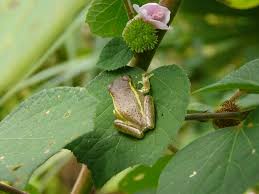Staking a Young Tree
When a tree is in the young stages, one of the most vital things you need to provide for it in addition to water and nutrients is support. If you don’t hold up the tree somehow, it might end up bending in a certain direction and growing extremely crooked for the rest of its life. So no matter what, you should always have some kind of support.
The most popular method of keeping young trees upright is to put long stakes into the ground on either side, and tie loops around the tree. Each loop should be fairly loose to allow for further expanding of the trunk. Lots of people just have a stake on one side of the tree, but this is not a good practice because it generally doesn’t allow for further growth of the tree.
You should only be staking your tree if you think that wind and other forces might be literally moving the ball of roots within the ground. Your staking should prevent all of this movement, because this is the most harmful thing that can happen to a young tree. It causes the roots to be in motion too much and not be able to properly get a hold on the soil so that the tree can develop normally.
Before you stake a tree, you should be completely sure that it needs it. If you constrict the movement and growth of a tree that doesn’t need to be tethered down, you could harm it beyond repair. For example, the staking mechanism you use could cause abrasion or “rashes” on the trunk. This will happen anyways, but why have it happen needlessly? Also, staking gives your yard an unnatural look and can present a hazard for people walking or running across the yard.
The staking process is actually rather simple. Just take 3 stakes and tie each one separately near the base of the trunk. If you use some sort of tether to prevent rope burn on your tree, that would be an even better solution. These can be purchased at any gardening shop, and are designed to be friendly to the bark of the tree. It is much better to stick with these instead of bare rope, to minimize the amount of friction the tree endures.
When you think your tree has been staked long enough to stand on its own, you should remove the stakes from the ground as soon as humanly possible. Every moment the tree is constricted it is losing some of its vitality. As soon as it seems like the wind is dying down around your area, look on the weather reports and see how much wind is forecasted. If the skies will be pretty clear for a while, you should at least temporarily take off the stakes.
To wrap it all up, you should never deny your tree a good staking. It is a completely necessary thing to do in certain situations. It is very crucial to understand when those occasions are, though. Staking a tree that doesn’t need it can be as damaging as not staking a tree that does need it. It might be beneficial for you to consult an expert, and get their opinion as to whether your tree should be staked, and for how long.
